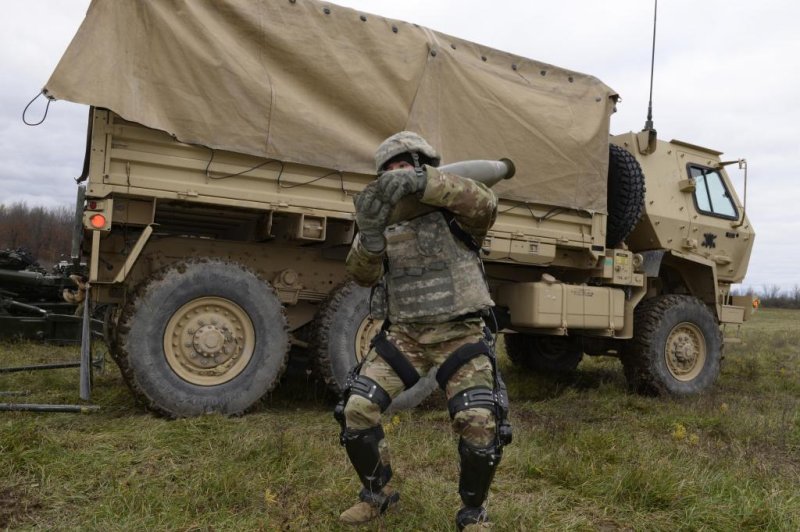Soldier wearing the Onyx exoskeleton moving a round of artillery ammunition, the sort of repetitive and heavy labor the system is designed to mitigate. Photo courtesy of Lockheed Martin
Nov. 29 (UPI) -- Lockheed Martin announced on Thursday that it has been awarded $6.9 million by the U.S. Army for development and enhancements to its Onyx load-bearing exoskeleton for dismounted troops.
The enhancements will be for further demonstrations of the system in 2019 for the Army Natick Soldier Research, Development and Engineering Center. The modifications will first face evaluation by the University of Florida.
Onyx is a powered, lower-body exoskeleton that uses AI technology and is meant to improve strength and endurance for soldiers carrying or dragging heavy loads and aids in steep inclines.
It is designed to help reduce stress on the lower back and legs using knee actuators and sensors managed by a AI system. It is meant to distribute weight and help keep the skeletal system in alignment, allowing soldiers to carry heavier loads while lowering the risk of injuries and fatigue.
A study by the University of Michigan showed that soldiers wearing 40-pound backups while climbing steep inclines expended less energy using the system, according to Lockheed Martin.
"Innovative human/machine technologies like Onyx can improve human performance, decrease injury and reduce fatigue to help soldiers accomplish physically demanding tasks," Keith Maxwell, exoskeleton technologies program manager at Lockheed Martin, said in a press release.
Onyx is designed by B-TEMIA, with Lockheed Martin developing and producing the system under a license agreement for military use. The technology already has medical functions such as assisting people who are partially paralyzed in walking and other tasks.















